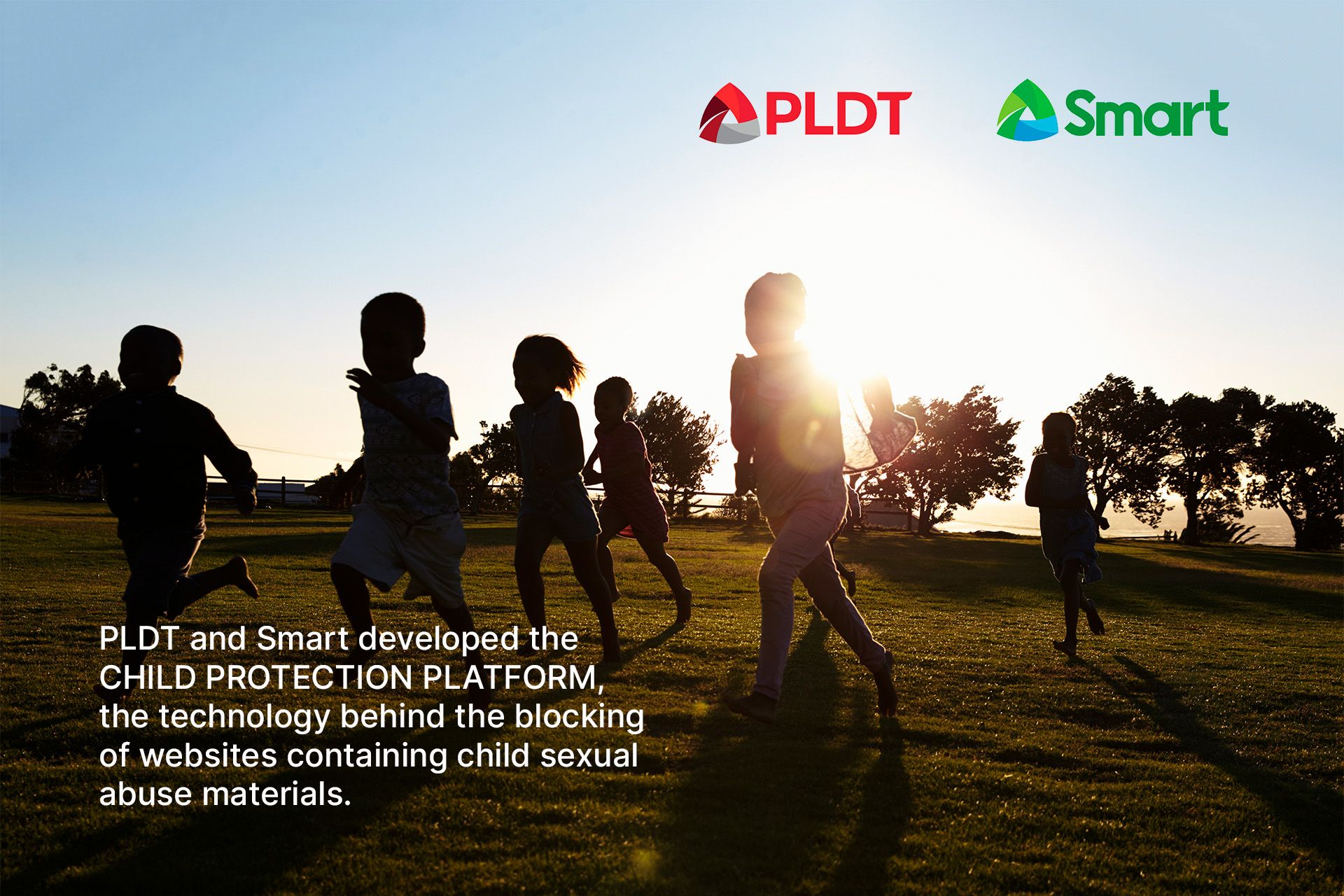
PLDT, the Philippines’ largest fully integrated telco company, along with Smart, its wireless communications and digital services subsidiary, are among the most vigilant corporations at the forefront of the fight against OSAEC, taking proactive measures to combat and prevent the proliferation of the crime.
“In 2023, PLDT and Smart blocked more than 900,000 URLs and online content linked to OSEC, and about 2.1 million access attempts to these URLs,” PLDT and Smart Corporate Sustainability Office representative April Kagaoan shared at an IJM stakeholder gathering earlier this year.
PLDT and Smart’s child protection initiatives have come a long way. But at first, there was no clear-cut pathway and the organization experienced many hurdles in defining its role and direction in the anti-OSEC response.
“Prior to the newly amended law RA 11930, telcos were subject to the mandate of RA 9775 that had a limited view of the digital ecosystem that enabled OSEC and imposes the task of filtering of content to telcos – which is against our constitution and our congressional franchise,” said April.
Telcos were being held accountable but without clear directives. April explained that “we were hamstrung by conflicting provisions in the law, but in the process, we were also hastily regarded as non-compliant and not taking accountability over this pressing concern affecting Filipino children.”
It was at this point in PLDT and Smart’s child protection efforts that they found an ally in IJM.
“IJM reached out to us and offered an opportunity to collaborate in line with our shared agenda to support the government in combating OSEC,” April shared. “We started out working together with the Philippine National Police – supporting their capacity-building efforts through connectivity and hotline solutions, and then later on, progressing to dialogues with the Department of Justice on our technical visibility on OSEC and our best practices in combating it.”
“At the time when we needed to bridge industry concerns with heightening expectations of our stakeholders and the pressing need to address OSEC, IJM helped by way of opening opportunities for constructive dialogues and collaborative work with the government and among various sectors.”
In 2020, IJM published a paper on Philippine ISP Visibility (updated in 2021) that details how sexually motivated offenders utilize Internet Service Providers (ISPs) for their crimes and provides recommendations on addressing technology hurdles to blocking CSME and online sexual exploitation of children.
PLDT and Smart used the study and aligned with recommendations such as membership with the United-Kingdom-based Internet Watch Foundation (IWF).
“We recognize that a lot of insights in the study helped shape the new legislation against OSEC (maintain logs, IPv6 transition, etc.). During the ASEAN ICT (Information and Communications Technology) Summit, the Department of Justice (DOJ) cited IJM’s work that led to RA 11930,” April said. RA 11930 is the anti-OSAEC (Online Sexual Abuse or Exploitation of Children) law.
PLDT's Child Protection Platform
PLDT developed the Child Protection Platform, the technology behind the blocking of websites containing CSAM the past few years. April explained that it’s “a solution embedded in our 24/7 cyber security operations – as well as our continuing subscription to the intelligence database of the Internet Watch Foundation and the Project Arachnid of the C3P.”

C3P is the Canadian Centre for Child Protection, and Project Arachnid is an initiative that utilizes automated CSAM detection methods. The technology detects threats and responds by instantly sending removal notices to electronic service providers. A team of dedicated analysts around the world are behind this project.
PLDT has also embedded child protection in its sustainability roadmap. “We also continue to implement a Human Rights Policy and a Child Safeguarding Policy that institutionalizes Child Protection across our operations.”
Scale of Harm Partnership
In 2023 PLDT partnered with IJM in the Scale of Harm research project. The project’s objective was to estimate the extent of the crime in the Philippines. PLDT and Smart provided valuable secondary data to supplement the primary research done by IJM’s Center to End Online Sexual Exploitation of Children and Nottingham University’s Rights Lab.
The results of the Scale of Harm study provided PLDT/Smart with useful guideposts.
“We have mapped out our current efforts against the recommendations. In a way, we found some validation on the roadmap that we are taking, particularly in terms of our support to community-based reporting and community-based efforts, and our continuing efforts to comply with RA 11930 on the tech provisions,” April shared.
PLDT / Smart’s approach is collaborative, and they are currently working with local partners on community-based interventions and programs, including the Makabata Helpline 1383 of the Council for the Welfare of Children and the BCPC (Barangay Council for the Protection of Children) program with SaferKidsPH.
The challenges in combatting OSEC
“It’s a cat-and-mouse game. We do our best to block URLs containing these illicit materials. But the perpetrators move from one domain or service provider to another. If we isolate a digital environment that prevents this kind of content from being accessed, then we’ll make it harder for criminals to share child abuse files online.”
In addition, “IPv6 transition remains a work-in-progress for the industry and the global digital ecosystem,” April said.
This refers to the system governing IP (Internet Protocol) addresses. Under the current IPv4, because of its limitations, it forces several computers or devices to share the same IP or Internet Protocol address, which is the unique number given to a computer that is connected online. With this forced sharing, it makes it difficult to pinpoint the particular device accessing CSAM or CSEM. IPv6 is the next-generation IP standard, which allows every device to have a unique address or identifier online. However, it is still slowly being introduced in various parts around the world. As of today, many devices and technologies in the Philippines (and many parts of the world) are not yet IPv6-enabled.
Apart from technological challenges, there are challenges in the creation and implementation of policies. “Learning from experience, policies must continuously be harmonized and adaptive of changing and evolving technologies.”
April also highlighted the cultural and social barriers we face that can get in the way of spreading awareness and promoting community reporting. “OSEC remains a difficult subject to talk about due to prevailing cultural and social norms (no touch, no harm, OSEC being a family matter).
“Most parents are not as aware and skilled enough to protect their own children; children must be empowered and must know more about their rights and encourage help-seeking behavior.”
Moving forward with collaborative solutions
PLDT and Smart recognize the need to “keep abreast of evolving threats and explore more collaborative solutions, especially in the context of AI.”
PLDT continues to “provide technical support to research and policymaking endeavors and participate actively in multi-sectoral fora to raise awareness and share best practices in combating OSEC.”
PLDT is also working with partners to “strengthen community-based, national, and global response” to the spread of OSEC.
“We laud IJM for being an active player that helps us keep our efforts in check and ensures efforts of various sectors are harmonized and supportive of nationwide and global efforts,” April said.
We at IJM are grateful for this long-standing partnership with PLDT and Smart,” says IJM’s Brand, Media, and Communications Director Evelyn Pingul. “It takes a village to protect a child, and we are honored to have the country’s major telcos PLDT and Smart in this ‘village’ along with the many partners who share the proactive and collaborative approach. We know we can’t win against OSAEC unless we do this together.”












